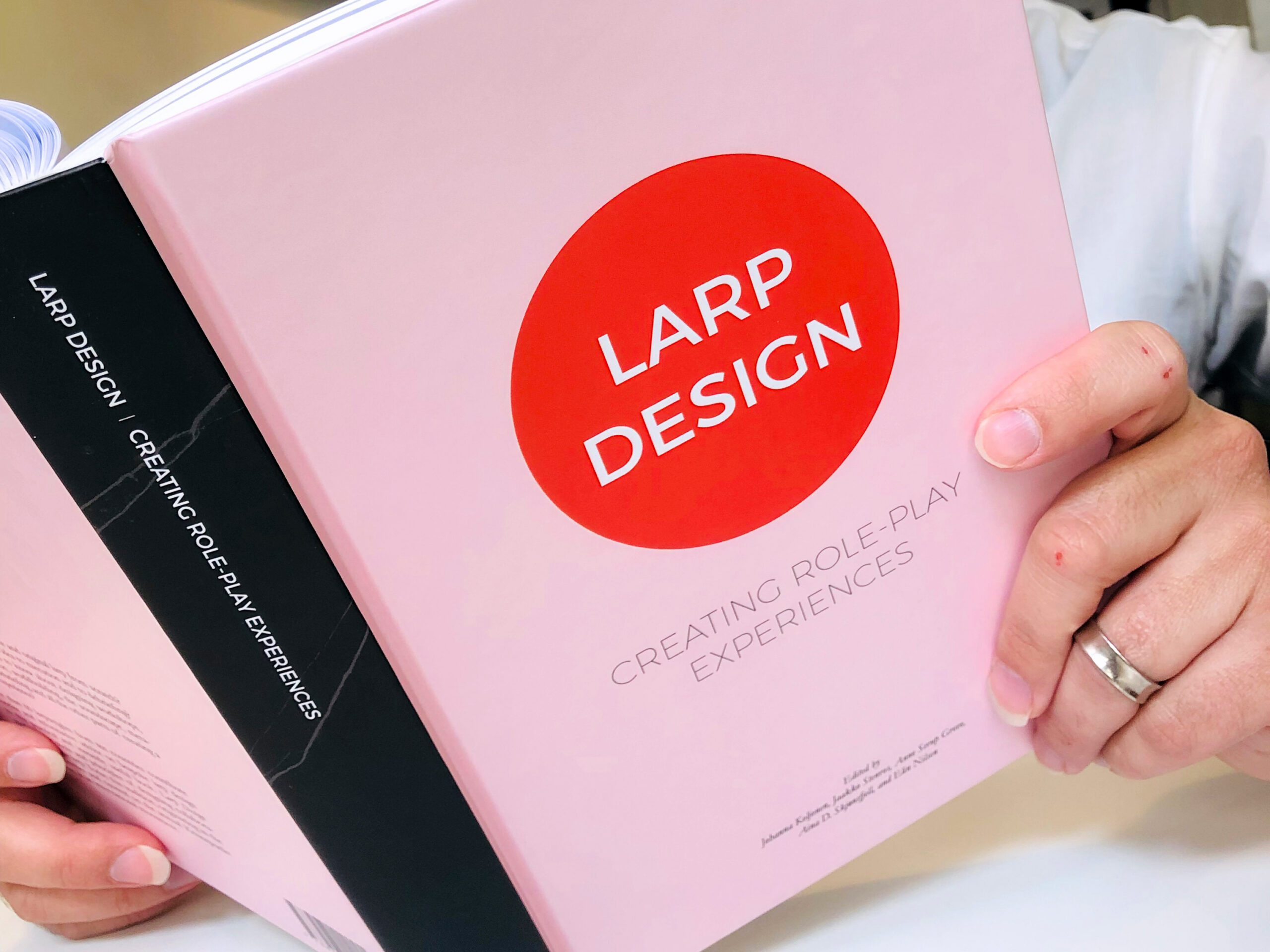Tag: Featured
-

Writing an Autobiographical Game
in
Designing an experience that explores autobiographical themes through metaphor while also incorporating characters based on real people.
-

I’m Not Too Fat For Your Larp
in
So why do so many games still have atmospheres where people who are fat are mistreated? Where being fat marginalizes the positions you’re allowed to have?
-

Larp Design Glossary
in
The original version of this glossary was published in the 2019 book Larp Design: Creating Role-Play Experiences. 360° illusion Larp design idea where what you see is what you get. The environment is perceived as authentic, everything works as it should affording participants to engage in authentic activity for real, and participants perform immersive role-play.
-

High Resolution Larp Revisited
in
Revisiting Andie Nordgren’s 2008 article on High Resolution Larping.
-

The Butterfly Effect Manifesto
in
This manifesto describes our preference for playing, designing, and facilitating larp experiences with the purpose of encouraging transformative impacts.
-

A Manifesto for Laogs – Live Action Online Games
in
Laog is short for live action online game – and that says it all, doesn’t it? We can larp – live action role-playing – when being behind our video camera.
-

10 Pieces of Advice for an Autism Friendly Larp
in
There are many things you can do to make sure that your larp is more inclusive of autistic people. This article offers several pieces of advice.
-

Your Alternate Relation Narrative (YARN)
in
Creating relations between characters is essential to larp. The YARN technique helps you create playable relationships between characters.
-

How to Take Care of Your Organizer
in
This article offers ways that players can take care of their organizers to help people avoid burning out and becoming discouraged from running larps again.
